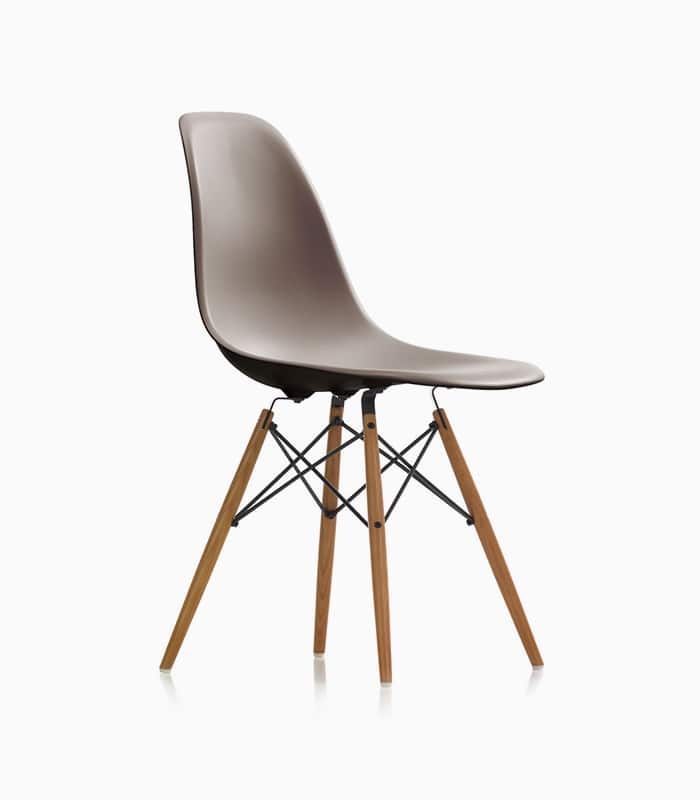Dog Saddle Bag Australian Guide

- Your Guide to Using a Dog Saddle Bag Safely and Smartly
- Our Hands-On Testing Process for Dog Saddle Bags
- What’s Inside Your Dog’s Adventure Backpack?
- Where Will Your Dog’s Saddle Bag Take You Next?
- Your Guide to a Safe and Savvy Dog Saddle Bag Purchase
- Your Ultimate Guide to Picking the Perfect Dog Saddle Bag
- Your Ultimate Guide to a Hassle-Free Dog Walk
- Your Top Dog Saddle Bag Questions, Answered
- Your Dog’s New Adventure Sidekick: What’s Next?
Content Table:
Your Guide to Using a Dog Saddle Bag Safely and Smartly
If you’re an Australian dog owner who enjoys outdoor adventures, you’ve probably noticed fellow hikers using dog saddle bag systems to distribute weight during long trails. These practical accessories have become increasingly popular across Australian bushwalking communities as more people discover their utility for carrying water, treats, and essential gear.
Based on years of serving Australian pet owners through our online platform, we’ll walk you through the key considerations when selecting and using dog saddle bags. We’ll examine different designs, weight distribution principles, and safety considerations specific to Australian conditions and dog breeds.
Essential reminders: Dog saddle bags should only be used with healthy, fully-grown dogs that have been properly conditioned to carry weight. Always consult your veterinarian before introducing any pack system, particularly for dogs with pre-existing health conditions. Ensure your dog maintains proper hydration and monitor for signs of fatigue or discomfort during use.
Key Takeaways
- Proper weight distribution is critical – never exceed 10-25% of your dog’s body weight depending on breed and conditioning
- Australian conditions demand weather-resistant materials and secure fastening systems
- Gradual conditioning over several weeks is essential before attempting long hikes
- Regular fit checks prevent chafing and ensure comfort during movement
- Balance convenience against your dog’s comfort – some designs prioritize accessibility over stability
Our Hands-On Testing Process for Dog Saddle Bags
Our analysis methodology combines multiple information sources to provide Australian dog owners with comprehensive guidance. We examine publicly available product specifications, manufacturer design notes, general retail sales patterns across Australian pet suppliers, common customer feedback from local hiking communities, and broader industry observations about outdoor pet gear trends.
Current 2025 market analysis indicates Australian dog owners are increasingly seeking multi-functional gear that performs well in diverse conditions, from coastal walks to mountain trails. Many retailers report growing interest in adjustable systems that accommodate different body types as owners recognize the importance of proper fit.
We evaluate dog saddle bags against these key criteria:
Weight Distribution & Balance: How effectively the design spreads load across the dog’s body without restricting movement or causing pressure points. Bags with unbalanced weight placement can cause gait abnormalities over time.
Material Durability & Weather Resistance: Suitability for Australian conditions including UV exposure, occasional water crossings, and abrasive vegetation. Some synthetic materials offer excellent water resistance but may lack breathability in warmer climates.
Adjustability & Fit Security: Range of sizing adjustments and stability during vigorous movement. Overly complex adjustment systems may secure well but prove frustrating during trailside access.
Capacity vs. Practicality: Balance between storage volume and manageable weight limits. Maximum capacity specifications often exceed recommended weight percentages for most dogs.
Accessibility & Organizational Features: Ease of accessing contents while worn and logical compartment arrangement. Multiple small compartments improve organization but may limit what can be carried.
Recent Australian customer feedback patterns suggest that while many owners initially prioritize maximum capacity, they later value comfort and stability features more highly after practical trail experience. This reflects a maturing understanding of how dog saddle bag systems should complement rather than complicate outdoor adventures.

What’s Inside Your Dog’s Adventure Backpack?
Understanding the technical aspects of dog saddle bag design helps Australian owners make informed decisions that prioritize their dog’s comfort and safety. The engineering behind these systems has evolved significantly to address the biomechanical needs of carrying dogs.
Harness Design & Weight Distribution
The foundation of any effective dog saddle bag system is its harness design and how it manages load distribution. Quality systems feature wide, padded straps that sit away from the tracheal area to avoid pressure on the throat. The weight should sit primarily over the shoulders and rib cage rather than the lower back, mimicking where dogs naturally carry weight when transporting items.
Many Australian-focused designs now incorporate mesh panels along the spine to enhance airflow and reduce heat buildup during summer hikes. This practical adaptation addresses local climate concerns while maintaining structural support. However, some ultra-breathable designs may sacrifice some water resistance, creating a trade-off that owners must consider based on their typical hiking environments.
Current industry observations note that designs with removable saddle bags allow the harness to function as a standard walking harness when not carrying gear, increasing value for owners who want multi-purpose equipment. The convenience of this approach must be balanced against potential compromises in specialized carrying performance.
Material Construction & Australian Conditions
Dog saddle bag materials must withstand diverse Australian environments while remaining comfortable against the dog’s coat. Most quality systems use nylon or polyester blends with varying denier ratings – higher numbers indicate heavier, more durable fabric but also increased weight.
Many Australian retailers now stock designs with PU-coated fabrics that resist light rain and morning dew while remaining flexible in colder temperatures. These coatings effectively protect contents during brief exposure to moisture, though they’re not substitutes for dedicated dry bags during water crossings or heavy rain.
Reinforced stitching at stress points significantly extends product lifespan, particularly where straps connect to the main body. Some owners report that designs with bar-tacking reinforcement at these critical junctions withstand vigorous use far longer than those with standard stitching, though this construction method typically increases manufacturing costs.
Compartment Design & Load Management
The arrangement and accessibility of compartments directly impact both organization and how weight distributes during movement. Symmetrical side pockets help maintain balance when loads are even, while additional back compartments can provide space for flatter, lighter items without significantly altering the center of gravity.
Many Australian dog owners prefer designs with external attachment points for water bottles or collapsible bowls, keeping frequently needed items accessible without opening main compartments. This approach works well for shorter stops but may create swinging weight if not properly secured during more technical terrain navigation.
Compression straps serve the dual purpose of stabilizing contents and reducing bulk, which helps prevent the load from shifting unexpectedly during movement. However, over-tightening these straps can deform the bag’s structure and potentially create pressure points against the dog’s sides, particularly with thinner padding systems.

Understanding these technical elements helps Australian owners select dog saddle bag systems that align with their specific needs while prioritizing their companion’s comfort and safety during outdoor adventures.
Where Will Your Dog’s Saddle Bag Take You Next?
Many Australian dog owners find that a dog saddle bag transforms their outdoor adventures by distributing weight evenly across their pet’s back rather than concentrating it in one area. Current 2025 market observations indicate that urban dog owners particularly appreciate how these accessories allow their pets to carry their own water, treats, and waste bags during city walks, though dogs with pre-existing back conditions may find even lightweight loads uncomfortable.

Many Australian weekend hikers report that their medium-sized active breeds comfortably carry up to 25% of their body weight in a properly fitted saddle bag during 3-4 hour trails. The most common positive feedback centers around the convenience of having dogs carry their own supplies, though some owners note that unevenly packed bags can cause their pets to walk with an unnatural gait until adjusted.
Metropolitan dog owners frequently observe that saddle bags help streamline their daily routines by allowing their pets to carry portable water bowls and cleanup supplies during neighborhood walks. The limitation noted by some owners is that bulkier designs can be challenging in crowded spaces or public transport, making streamlined profiles preferable for city use.
Beach-going dog owners along Australia’s coastline often find waterproof saddle bags particularly valuable for protecting phones and keys from saltwater exposure. However, recent customer feedback suggests that sand can accumulate in buckles and straps if not rinsed thoroughly after each beach visit. For multi-day camping trips, many Australian owners prefer saddle bags with multiple compartments to separate food, first-aid supplies, and sleeping arrangements, though overpacking remains a common beginner mistake that can cause canine discomfort.
Your Guide to a Safe and Savvy Dog Saddle Bag Purchase
When selecting any dog gear in Australia, consumer protection standards require that products meet basic safety requirements, particularly regarding materials and construction. A well-designed dog saddle bag should feature breathable padding, secure but quick-release buckles, and no sharp edges that could cause injury during movement.

- Check for Australian supplier information and contact details
- Verify stitching quality and reinforcement at stress points
- Ensure adjustable straps accommodate your dog’s unique shape
- Look for non-toxic material certifications where available
- Be wary of unusually low prices that may indicate inferior materials
Weight distribution represents the most critical safety consideration with saddle bags. Veterinary guidance consistently recommends that dogs carry no more than 10-25% of their body weight, depending on their fitness level, age, and breed characteristics. Brachycephalic breeds, dogs with existing joint issues, or puppies with developing skeletal systems typically shouldn’t carry any load beyond a lightweight harness.
Nothing in this article constitutes veterinary advice. If your dog shows signs of discomfort, limping, or behavioral changes while wearing a saddle bag, remove it immediately and consult your veterinarian. Regular inspection for wear points, loose stitching, or damaged components helps maintain safety over time, as even high-quality saddle bags degrade with extensive outdoor use in Australia’s varied climates.
Your Ultimate Guide to Picking the Perfect Dog Saddle Bag
Choosing the right saddle bag involves matching your dog’s physique, your typical activities, and the specific features that enhance convenience and safety. Australian dog owners in 2025 typically consider capacity, material durability, adjustability, and specialized features like waterproofing when making their selection.

For urban walking: Choose lightweight designs (1-2L capacity) with streamlined profiles that won’t catch on obstacles. Not ideal for long hikes where more supplies are needed.
For weekend hiking: Medium capacity bags (3-6L) with multiple compartments work well. Look for hydration bladder compatibility. May be excessive for simple neighborhood walks.
For water activities: Fully waterproof designs with drain holes prevent waterlogging. Typically feature less organizational space than non-waterproof options.
For hot climates: Mesh-backed designs maximize airflow but may be less durable than solid materials in rough terrain.
When evaluating different models, consider how the saddle bag’s attachment system complements your dog’s existing gear. Some designs integrate with specific harness systems, while others function as standalone units. Reflective elements become particularly valuable for Australian owners who walk their dogs during early mornings or evenings when visibility decreases.
The most common trade-off involves capacity versus comfort. Higher-capacity saddle bags offer more storage versatility but can become cumbersome if not properly balanced. Many experienced Australian dog owners maintain multiple saddle bags for different activities rather than seeking a single solution for all scenarios.
Your Ultimate Guide to a Hassle-Free Dog Walk
Fitting and Using Your Dog Saddle Bag
Place the empty saddle bag on your dog without attaching any items. Ensure the spine area remains uncovered and the bag sits evenly on both sides. Check that straps don’t rub against legs or armpits, adjusting as needed for comfortable movement.
Begin with lightweight items (less than 10% of body weight) for short periods. Distribute weight evenly between both sides, checking frequently for any signs of discomfort or gait changes during the first few uses.
Pack heavier items closer to your dog’s body and lighter items toward the outside. Secure all compartments properly to prevent shifting during movement. Avoid overstuffing compartments, which can create pressure points.
After each use, empty all compartments and inspect for debris or moisture. Allow the saddle bag to air dry completely before storage. Check straps and buckles for wear, replacing any compromised components promptly.
Store in a cool, dry place away from direct sunlight, which can degrade materials over time. Keep buckles fastened to prevent tangling and maintain the bag’s shape between uses.
Proper introduction to a dog saddle bag involves gradual acclimation, particularly for dogs new to carrying weight. Many Australian owners find that starting with very short sessions of 10-15 minutes helps their pets adjust to the sensation before attempting longer adventures.
Your Top Dog Saddle Bag Questions, Answered
Your Dog’s New Adventure Sidekick: What’s Next?
Selecting the right dog saddle bag involves balancing your specific needs with your dog’s comfort and safety. The Australian market in 2025 offers numerous options tailored to different activities, from streamlined urban designs to heavy-duty hiking companions.
- For city dwellers: Prioritize lightweight, low-profile designs that won’t impede movement in crowded spaces
- For active hikers: Choose models with balanced weight distribution and durable, weather-resistant materials
- For water enthusiasts: Select fully waterproof options with drainage features for aquatic activities
- Pre-purchase checklist: Verify your dog’s weight capacity, measure for proper fit, and research supplier reputation
- Always remember: Monitor your dog’s response during initial uses and adjust accordingly
When moving forward with your selection, consider both your current needs and potential future activities. Many Australian dog owners find that investing in a quality saddle bag enhances their outdoor experiences while ensuring their pets remain comfortable and engaged during adventures.
About the Author
With over eight years specializing in pet product analysis and outdoor gear evaluation, our senior product reviewer has developed expertise in assessing canine equipment for Australian conditions. Their work focuses on practical testing methodologies and consumer guidance, helping Australian pet owners make informed decisions about gear that enhances their active lifestyles with their dogs while prioritizing animal comfort and safety.


